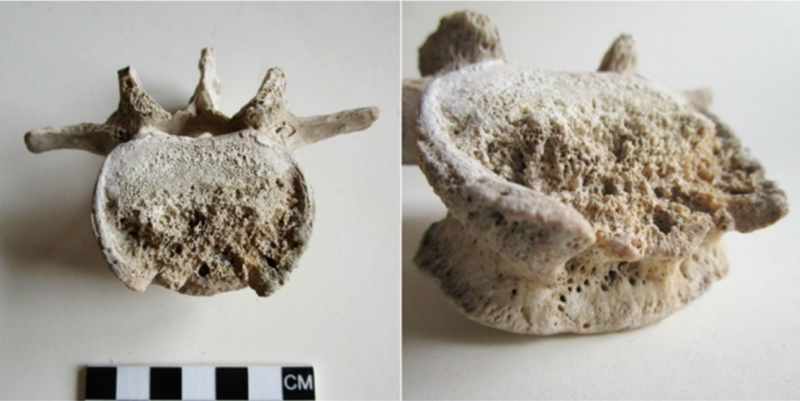
The eruption of Mount Vesuvius buried the Roman city of Pompeii in ash in 79 CE. Anthropologists recently sequenced ancient DNA from one of the victims, a man in his late 30s, providing a glimpse into the family background of a Roman citizen.
The results also suggest that he suffered from a tuberculosis infection in his lower spine. In one of the victim’s vertebrae, the study found DNA from the bacterium that causes tuberculosis, suggesting that the infection had traveled through the bloodstream from his lungs to his lower spine.
Pompeii man was Italian
A team led by anthropologist Gabriele Scorrano of the University of Rome sequenced the genome of the victim, which revealed, unsurprisingly, that man was of central Italian descent. Although the ancient man’s genome didn’t yield much new information about life in Pompeii, it proves that bones from Pompeii may still contain enough DNA to sequence—and that could be exciting news.
Even partial genomes from several more Pompeiians could shed some light on the demographics of a cosmopolitan Roman city, where historical documents tell us that people came from all over the Roman Empire (willingly or not). But sequencing ancient DNA from skeletons at Pompeii has been a challenge because high temperatures—like the ones in the pyroclastic flow of superheated volcanic gas and debris that killed everyone in the city—tend to cause chemical changes in bone and damage the DNA inside. Previous studies have managed to sequence only a few short stretches of mitochondrial DNA (which is stored in the meme-famous “powerhouse of the cell” and passed directly from mother to child).
Scorrano and his colleagues say advances in technology make it possible to get DNA from sources that would have been unusable a few years ago. And, they claim in a recent paper, that the volcanic ash and rock that buried Pompeii may also have shielded the remains from things like oxygen, which can also degrade DNA. In other words, sequencing an ancient genome from Pompeii has worked once, and that means it may work again.
Diagnosis: Tuberculosis
Scorrano suspected the man might have spinal tuberculosis based on the condition of his fourth lumbar vertebra (L4), one of the bones in the lower spine. An infection had eaten away a hole in the upper front part of the bone, and the surrounding bone was badly pitted and eroded. In a sample of bone from the vertebra, Scorrano and his colleagues found genetic material from Mycobacterium tuberculosis, the bacterium that causes tuberculosis. That confirmed the diagnosis, and it suggests some details about what the man’s life may have been like before Mount Vesuvius erupted.
Ancient Rome was a hotbed of tuberculosis, mainly due to the crowded conditions of most Roman cities. Tuberculosis is usually a lung disease, but occasionally bacteria from the lungs can travel through the bloodstream to other parts of the body, including the bones. In your vertebrae, and in the long bones of your arms and legs, dense networks of blood vessels supply blood to the bone marrow. If you happen to have tuberculosis, those blood vessels may also carry bacteria into the bone.
And 2,000 years later, archaeologists may be able to sequence DNA from those bacteria and discover that you had spinal tuberculosis until a volcano buried your city in ash and pumice. Some people have genuinely terrible luck.
https://arstechnica.com/?p=1856850

